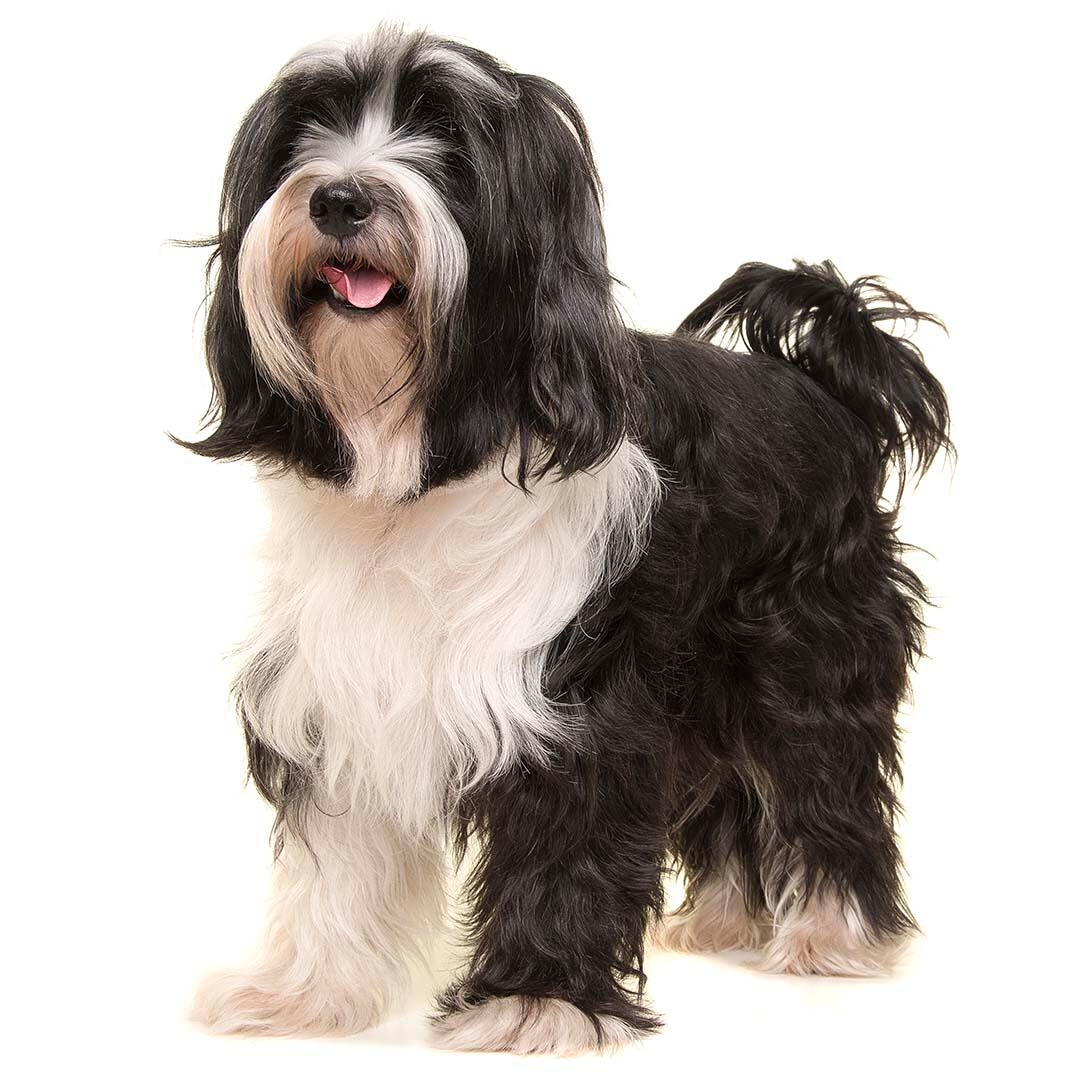
| Family-friendly: | 3/5 |
| Exercise needs: | 3/5 |
| Easy to train: | 3/5 |
| Tolerates being alone: | 2/5 |
| Likes other pets: | 3/5 |
| Energy level: | 4/5 |
| Grooming needs: | 5/5 |
| Shedding: | 2/5 |
The Tibetan Terrier can be prone to:
- Hip dysplasia
- Primary lens luxation which is a condition where the lens moves from it's normal position in the eye which will result in vision loss and can cause pain.
- Progressive retinal atrophy which is an inherited disorder where part of the eye degenerates and wastes away which can result in blindness.
- Neuronal ceroid lipofuscinosis which is a storage disease that can cause nerve cell damage.
- Diabetes mellitus¹ which is a condition where dogs develop very high sugar levels because they do not produce a normal amount of insulin.
Priority Kennel Club health schemes and testing:
- Eye screening scheme
- Hip dysplasia screening scheme
- DNA testing for primary lens luxation, neuronal ceroid lipofuscinosis and progressive retinal atrophy. These test indicate whether or not a dog has the potential to be affected by this condition.
¹B. Catchpole et al, 'Canine diabetes mellitus: from phenotype to genotype', 2008, Journal of Small Animal Practice
A good-natured, happy and outgoing dog, the Tibetan Terrier is clever, alert and game. While naturally reserved with strangers they are loyal and affectionate to their loved ones and people they call friends. A fun-loving companion, Tibetan Terriers are bouncy, larger-than-life characters and can make super family dogs who are up for long walks and taking part in dog sports. Perhaps due to their histories, they enjoy being on high places - such as window ledges or the backs of sofas.
| Family-friendly: | 3/5 |
| Exercise needs: | 3/5 |
| Easy to train: | 3/5 |
| Tolerates being alone: | 2/5 |
| Likes other pets: | 3/5 |
| Energy level: | 4/5 |
| Grooming needs: | 5/5 |
| Shedding: | 2/5 |
With their origins in the monasteries of the Lost Valley of Tibet, the Tibetan Terrier looks like a longer-legged version of their close relative, the Lhasa Apso - and indeed the two were so often confused that it’s hard to separate their histories. While called the Tibetan Terrier, this dog has never been used in the traditional terrier breed role of going to ground after prey. Instead the Tibetan Terrier was a herding dog and moved sheep using the unusual method of running over the tops of their backs while in narrow ravines. They also were associated with Buddhist monasteries where they were both companions to the monks and high vocal guards. They were largely unknown outside of their native country until in 1922, a Tibetan Terrier puppy was given to Dr Agnes Greig, a British doctor working in India, as thanks for saving a Tibetan woman's life.
Ideal Tibetan Terrier people will love a clever, independently minded dog and have some experience of the more independent pastoral types, or watchdog types. You should also enjoy grooming as TTs do need lots of coat care, particularly in the first two years and their coat is not suited to being left ungroomed between professional groomer visits. Owners should be prepared to socialise extremely well and keep up the training, or this breed can go self-employed, which generally involves barking, and climbing up onto high surfaces, or indeed, both! Needs an owner or family who are at home most of the time as they do not like being left alone.
A lively dog, the Tibetan Terrier loves getting out and about, and needs at least an hour a day, though will happily accept more. They also enjoy plenty of games and enrichment to keep their busy minds and bodies active. Without regular exercise and training, they can get bored, unruly and noisy.
This is a dog who doesn’t need that much space - although they do enjoy a garden and need access to good daily walks where they can be let off lead to run and play.
Small dogs have a fast metabolism, meaning they burn energy at a high rate, although their small stomachs mean that they must eat little and often. Small-breed foods are specifically designed with appropriate levels of key nutrients and smaller kibble sizes to suit smaller mouths. This also encourages chewing and improves digestion.
The Tibetan Terrier can easily become the star of any training class as they are clever, learn quickly and enjoy working with their owner. They will happily turn their paw to everything from obedience to agility, heelwork to music and indeed any of the popular dog sports.
They can however get overly vocal and also are likely to suffer from separation related behaviour problems as they do not like to be left alone.
A non-shedding breed, the Tibetan Terrier needs his thick, long, double coat to be brushed and combed through at least every other day, to avoid mats from occurring. It should also be checked daily for debris from walks. The coat is often clipped to a shorter, more manageable length for pet owners, though will still need regular brushing or mats will form.
Being quite sensitive, the Tibetan Terrier is a good family dog for older or sensible children - especially those who may want to get involved in dog sports. They enjoy games and being involved in all family outings and activities.
While many dogs are traditionally thought of as being good with children, all dogs and children need to be taught to get on with and respect each other, and be safe together. Even so, dogs and young children should never be left alone together and adults should supervise all interactions between them.
While there are very few dogs left in Tibet, in remote areas it is still possible to see Tibetan Terriers working sheep exactly as they have done for centuries.